Working in different materials with a router |
||||
 |
||||
 |
Routers are most commonly a woodworking power tool but they can also be used with some other materials. Due to their differing properties, each material should be approached in a slightly different way when it comes to routing. You must also ensure the cutter you are using is suitable for the material and application, you select an appropriate speed for the router, and you are aware of using different feed rate for different materials. It's advisable to practise with scraps if you are using a new material for the first time. |
|||
Wood |
||||
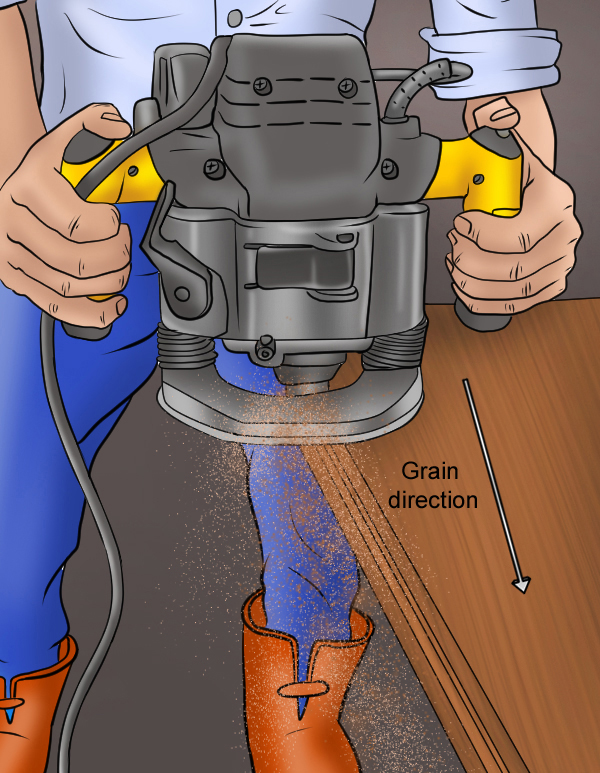 |
When routing wood, wherever possible, try to rout with or along the grain. Routing across the grain can be difficult and may cause tear-out.
If you're routing in hardwood, you can apply a light coat of water to the end grain and allow it to sit for a few minutes before you work. This will soften the wood and help prevent any problems that may arise as you cut.
All cuts in harder woods should be made at a slower rate. But, it's worth noting that soft or hardwood usually refers to the type of tree the wood comes from, rather than specifically the hardness of the wood, and there is a huge variation of hardness for both types. Some hardwoods, like balsa, are actually softer than most softwoods, but the hardest hardwoods are substantially harder than any softwood. |
|||
 |
Check any knots in the wood before routing. Smaller, tight knots will not usually cause any issues, but you should still brace yourself when approaching them and slow your feed rate down.
Larger, loose-looking knots could pose problems and you should try to plan your project around them. |
|||
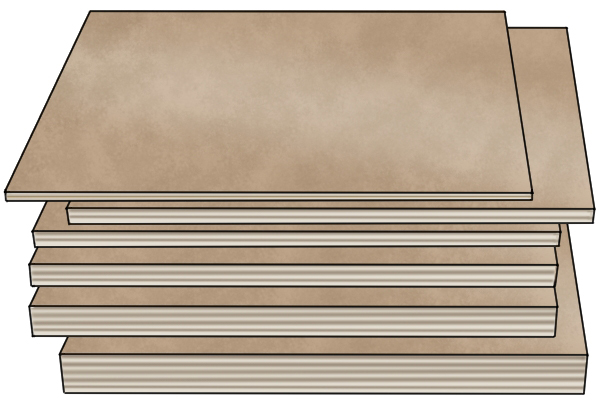 |
Manufacturer timber - Plywood and MDFBoth MDF and plywood are common types of manufactured board.
Plywood is praised for its strength, but it can create problems when routing because the layers of wood are arranged with their grains in alternating directions which can make it especially prone to tear-out. |
|||
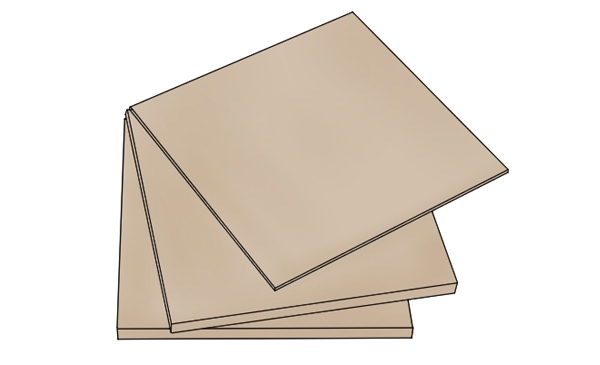 |
In comparison, because there is no grain direction to consider, MDF, and many other fibreboards, can be relatively easy to rout and much less prone to tear-out.
However, it is important that your work area is properly ventilated as these materials create a lot of very fine dust when cut. |
|||
Laminate |
||||
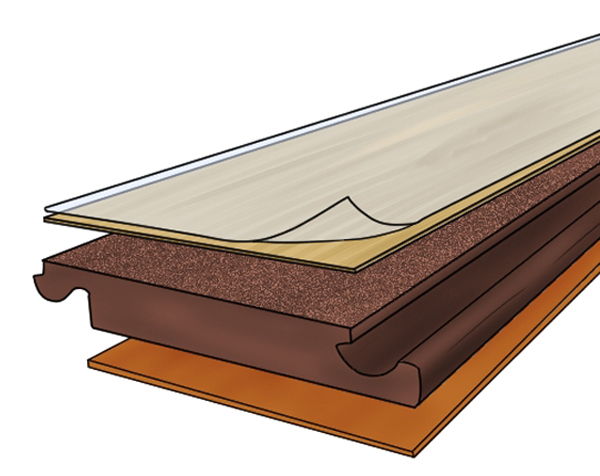 |
Laminate is made by coating thin layers of paper with resin and then binding them together using heat and pressure.
The top layer will usually be decorative and may have been made to mimic the appearance of stone, wood or another natural material.
The laminate is then bonded to an under layer, usually a material like plywood or MDF. |
|||
 |
||||
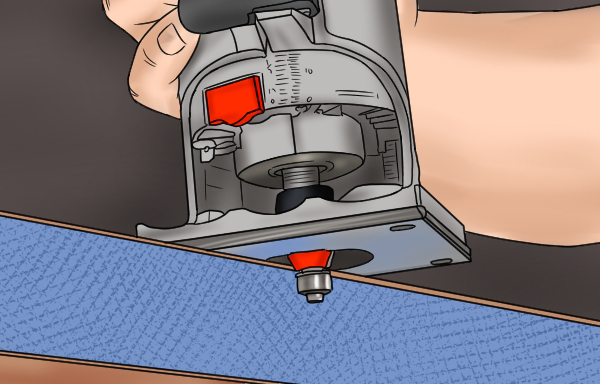 |
When routing in laminate, the cutter may not only be cutting through the hard layer of laminate but also the manufactured wood underneath. As a result, it is considered a very abrasive material to work with and is likely to require trimmers designed specifically for work with laminate, often called pierce and trim cutters. Because of this, you should only remove a couple of millimetres of material at a time to avoid putting extra strain on the cutting edges of the cutter. |
|||
Plastic |
||||
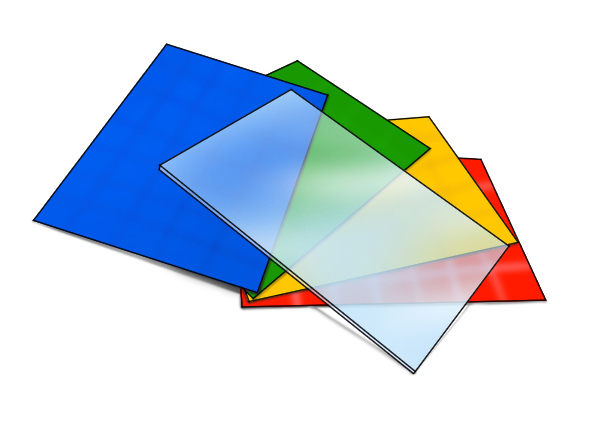 |
Generally speaking, plastics can be broken down into two categories: hard and soft.
Hard plastics include acrylic, nylon, uPVC, hard PVC, and laminate.
These materials are often prone to splintering and, if you're not careful, the cutter can remove large chips rather than slicing cleanly through. |
|||
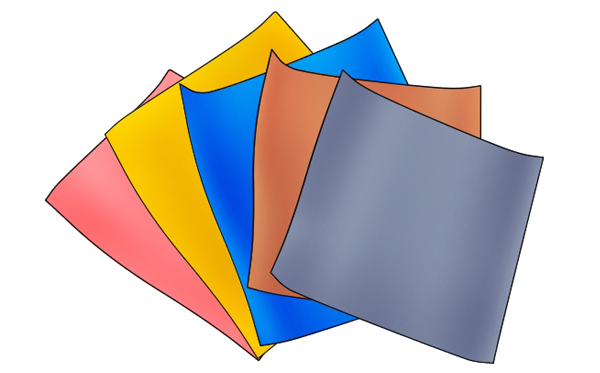 |
Examples of soft plastics are polycarbonate, polyethylene, and soft PVC.
Soft plastic is easier to work with and the waste material will often come away in the form of curls rather than chips, meaning the cut should be cleaner. |
|||
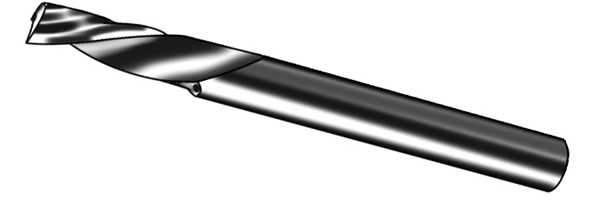 |
When working with any type of plastic, it's best to use a cutter made of solid tungsten carbide, as an HSS cutter will become blunt very quickly. Also, a spiral bit with 'O' flutes is often recommended. |
|||
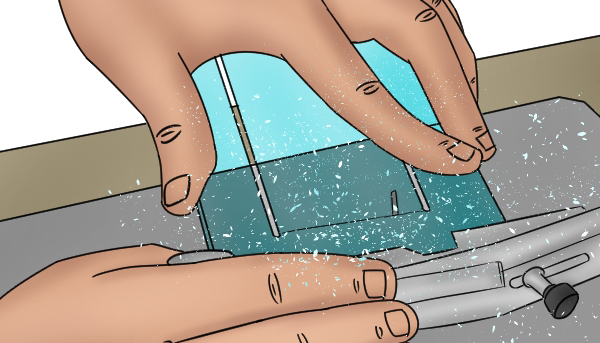 |
It's especially important when routing plastic to use some form of dust collection. Once you begin cutting, the plastic shavings removed by the router bit will become electrically charged and will stick to everything! These are very difficult to remove or sweep up, so using a suitable dust extractor as you work will reduce and build-up of debris. |
|||
Ceramic and glass - Specialist routing |
||||
 |
Routing in ceramic and glass should only be done using a CNC (computer numerical control) router. This so that the feed rate can remain constant throughout the application. Small changes in feed rate can have a big impact on the finished surface of ceramic or glass. As well as this, cutting ceramic or glass will require a constant stream of coolant to be applied to the work surface and router bit. This would be difficult and unsafe to do with a hand-held or table-mounted router. Cutters with a diamond coating are best suited to routing in ceramic and glass. They have an abrasive layer of synthetic diamond particles across their cutting edges which give them increased strength and an abrasive cutting action. |
|||
 |
||||
Metal |
||||
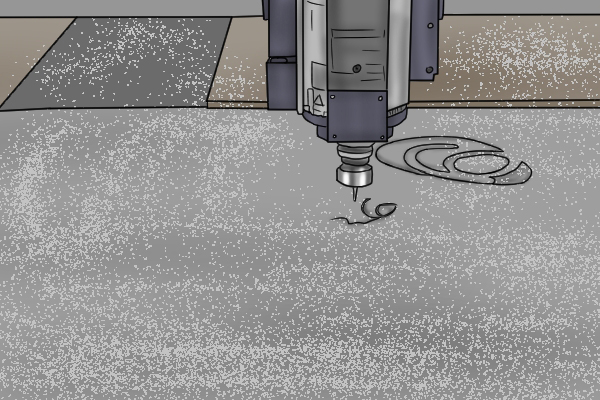 |
Routing in metal is mainly done with a CNC router, as the feed rate and cutting depth can be controlled far more accurately. However, some lighter cutting applications such as veining work or trimming can be done in non-ferrous metals (e.g. brass, copper, and aluminium), using a hand-held router with a specialist cutters. When working with these metals, you should only use cutters made out of super high-speed steel (HSS) or Solid tungsten carbide (STC). These are very strong but tend to be more expensive. |
|||
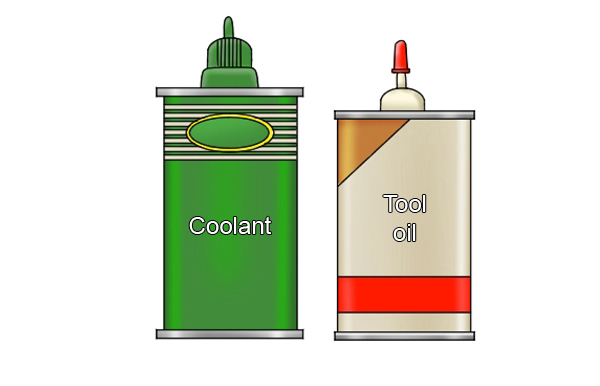 |
You should feed very slowly and take extremely shallow passes to ensure you do not damage the cutter.
During routing, you must use a coolant, wax stick, or lubricant to cool the cutter and the surface of the workpiece. Cutters designed for routing aluminium and uPVC are commonly used for specialist jobs, for example, they are used to work extrusions used by door and window fabricators, like with the Trend window industry cutters in HSS. |
|||







